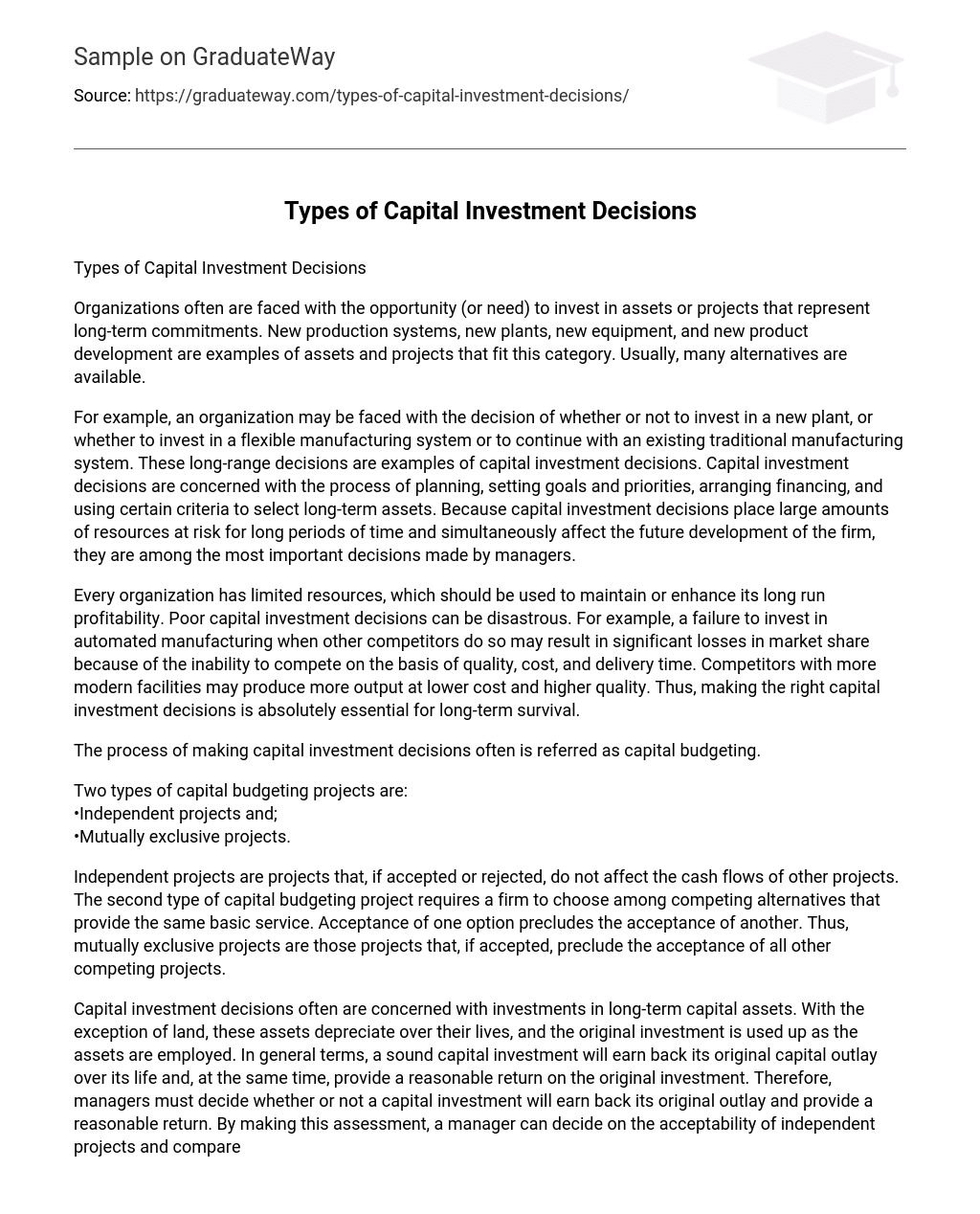Organizations often are faced with the opportunity (or need) to invest in assets or projects that represent long-term commitments. New production systems, new plants, new equipment, and new product development are examples of assets and projects that fit this category. Usually, many alternatives are available.
For example, an organization may be faced with the decision of whether or not to invest in a new plant, or whether to invest in a flexible manufacturing system or to continue with an existing traditional manufacturing system. These long-range decisions are examples of capital investment decisions. Capital investment decisions are concerned with the process of planning, setting goals and priorities, arranging financing, and using certain criteria to select long-term assets. Because capital investment decisions place large amounts of resources at risk for long periods of time and simultaneously affect the future development of the firm, they are among the most important decisions made by managers.
Every organization has limited resources, which should be used to maintain or enhance its long run profitability. Poor capital investment decisions can be disastrous. For example, a failure to invest in automated manufacturing when other competitors do so may result in significant losses in market share because of the inability to compete on the basis of quality, cost, and delivery time. Competitors with more modern facilities may produce more output at lower cost and higher quality. Thus, making the right capital investment decisions is absolutely essential for long-term survival.
The process of making capital investment decisions often is referred as capital budgeting.
Two types of capital budgeting projects are:
•Independent projects and;
•Mutually exclusive projects.
Independent projects are projects that, if accepted or rejected, do not affect the cash flows of other projects. The second type of capital budgeting project requires a firm to choose among competing alternatives that provide the same basic service. Acceptance of one option precludes the acceptance of another. Thus, mutually exclusive projects are those projects that, if accepted, preclude the acceptance of all other competing projects.
Capital investment decisions often are concerned with investments in long-term capital assets. With the exception of land, these assets depreciate over their lives, and the original investment is used up as the assets are employed. In general terms, a sound capital investment will earn back its original capital outlay over its life and, at the same time, provide a reasonable return on the original investment. Therefore, managers must decide whether or not a capital investment will earn back its original outlay and provide a reasonable return. By making this assessment, a manager can decide on the acceptability of independent projects and compare competing projects on the basis of their economic merits.
To make a capital investment decision, a manager must estimate the quantity and timing of cash flows, assess the risk of the investment, and consider the impact of the project on the firm’s profits. One of the most difficult tasks is to estimate the cash flows. Projections must be made years into the future, and forecasting is far from a perfect science. Obviously, as the accuracy of cash flow forecasts increases, the reliability of the decision improves.





